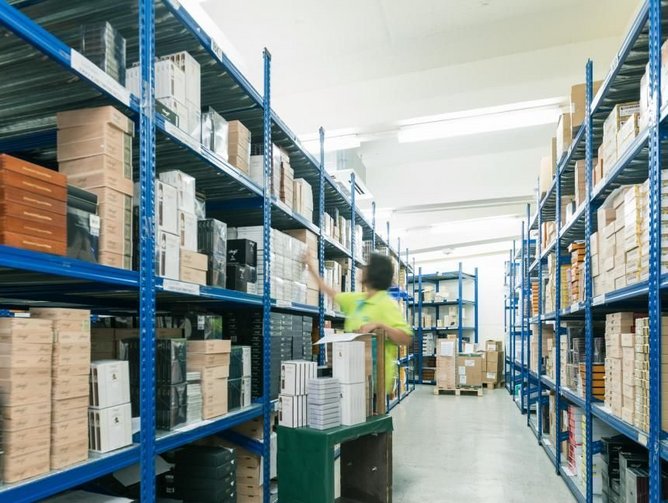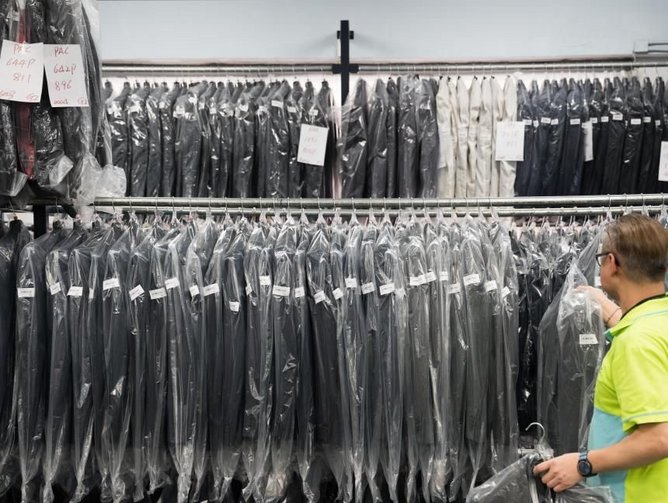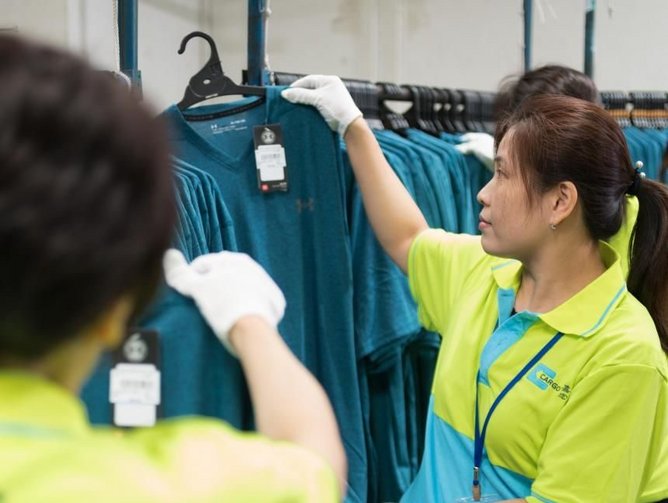Glen Seto, Chief Process and Information Officer has only been with Cargo Services Group (CSG) for seven months. He states: “e-commerce has grown so much in the past few years, which has caused considerable disruption to our customers in the manufacturing and retail industries. Currently we are in a volatile, uncertain, complex and ambiguous (VUCA) business era, in which many corporations have created complex and competitive markets. Through digital transformation and optimisation, logistics operations can be developed to be more efficient and innovative. It was this mindset that piqued my interest to be involved back in the industry.”
Prior to being Chief Process and Information Officer at Cargo Services Group, Seto held various positions within FedEx, UHN, Katalogic, SML, Adidas and Kiabi. As part of his current role he has four core priorities that the company focuses on both internally and externally in order to maintain its competitive edge within the industry: transformation, commercialisation, visualisation and innovation.
“For us, transformation is looking at opportunities within the company to improve and transform our systems and processes,” he explains. “Recently, we have been looking to optimise our ways of managing freight information.” Alongside the company’s internal transformation, Seto highlights that it also looks to commercialise new software and technology to improve the services it provides to its logistics customers. “Commercialisation is part of our drive to share with our customers the benefits of what we have learnt; visualisation and innovation is our continuous process,” he notes. “Technology changes very quickly so we are constantly looking at new entrants and technologies that can be applied to the business.”
Seto believes that connectivity is a core trend for the logistics industry. “In logistics, we are behind in terms of connectivity technology. However it is much easier now with fast-developing innovations with API software architectures,” he says. In addition to connectivity, he highlights that ever increasing detail in end-to-end visibility is an emerging trend, along with automation, saying that “there is more and more happening in terms of robotics, such as driverless forklifts and robotic arms.”
When it comes to CSG’s digital transformation, the company is driving innovation into the heart of its traditional methods. “For our operations and processes we came up with a circular feedback loop, where we are constantly defining, measuring, proof of concepting, operating and then redefining,” says Seto. “We are very pragmatic about our innovation. It's about finding value and assessing which implementations make good business sense, as opposed to just innovating for the sake of it.” In order to achieve its transformation strategy, the company works closely with its ecosystem of partners including Chinese Telco, Microsoft and CS Pac.
Increasingly SMART warehouses
When it comes to its warehousing operations, CSG is moving its infrastructure over to the cloud. Seto elaborates: “this is something I am carefully focusing on. eCWMS is predominantly a system we use to manage our warehouse operations for our customers. It helps us to add efficiency to our operations whilst sharing information with our customers for collaboration and visibility. However, I’m sharing our expertise and knowledge, fused into a software platform offering that will be sold as just software.The commercialising of this software allows us to focus on going beyond our current logistics customers’ needs to create a product for anyone that has a warehouse.”
The new version of eCWMS will be a cloud-based platform designed to be simple and easy to use, standardised but rich with features for fast-deployment; it will also be modular. Seto also shares that the company is working on some new modules such as algorithmic pick routing tool, warehouse layout design simulation tools, and automated data entry functions. In addition it is looking at IOT components and people movement flow tracking - this is currently in the R&D phase.
Above all, Seto understands that the richness of the features are useless if the platform isn’t easily integratable and connected to all of the different parties that operate in today’s complex supply chains. As a result, his strategy for eCWMS is to ensure the platform is modular, easy to configure and simple to integrate. Because of this, he’s already launched this new version this year, which has seen rapid adoption.
In addition to the new offerings on the warehouse side, eCoreOS is another foundational software that CSG uses to capture e-commerce order management operations for its customers. eCoreOS currently has interfaces built with e-commerce shopping platforms such as ebay, shopify, Taobao, TMALL and so on, and is able to take these shopping carts and create orders to eCWMS (or any other warehouse system) for the pick, pack, and delivery operations. It is currently being used by more than 50 retail customers in Hong Kong, China, Australia, Singapore, Bangladesh and the UK, and has the ability to integrate with couriers of your choice and being able to create invoices for any of the parties in the supply chain. “VUCA is pushing us in many different ways, but I’m doing the same to CSG, to be faster, smarter, and more efficient in areas that we’ve never considered before,” Seto enthuses.
Visibility and simplicity
Seto believes that “cargo and product tracking is the most valuable piece of information we can provide to customers, and even ourselves. It can provide better and informed decision making, and the improved visibility of real time tracking allows us to make decisions at exactly the right time.”
CSG’s technologies have allowed it to integrate and gather upstream visibility during product development stages through the PO visibility systems that its customers employ (such as Lima, InforNexus, etc.) - this has always provided adequate information. However, to advance further, the company has its Cargotrack platform, which allows for the centralising of all data upstream and downstream, including all the freight movement after the product has been produced. The new release of Cargotrack is built on the newest technologies, and it has API capabilities for all other systems to connect and flow data into it seamlessly. The centralising of data in this way creates simplicity for the company’s customers.
Autonomous robots automation
When speaking with Seto, he highlights how CSG is joining with others in the industry to develop autonomous robots for its warehouses. “We have been testing out these types of robotics in the warehouse and are seeing, in certain scenarios, increased efficiency. However, we are still currently in the proof of concept stage,” he states. As in other areas, CSG always looks to increase the breadth of capabilities and services that it can provide to e-commerce B2C customers, particularly in scenarios where this type of automation and quick turn-around time is what the “want it now” consumers demand.
Artificial software intelligence
In addition to the aforementioned technology advancements for CSG, AI & software robot automation (RPA) are also part of its innovation portfolio. When it comes to AI, Seto sees great potential, particularly for applications such as forecasting costs and market stability within logistics. “At the moment, I would say the AI we are using is on an operational level. For example, we have RPA systems that use AI and machine learning to process, data enter, and validate invoices and the key is that it continues to learn each time they carry out a task, increasing accuracy every time.”
Seto acknowledges that with innovation comes challenges, and in particular, he views education as a significant factor. “Explaining the opportunities and abilities of innovative technology, creating a cultural shift from ‘that technology has nothing to do with me’ to ‘how could I use that technology to help with what I am doing?’, has been a big challenge.” Since joining the company, he has worked to kickstart an innovation lab concept. “I think one of the biggest problems that organisations are facing is not only new technology, but the skill set and mindset of their people. The innovation labs are designed for brainstorming innovations that can enhance our operations.”
Looking to the future of logistics, Seto wants to see digital twins and Big Data being implemented within the company. “We haven’t got there yet, but we are certainly laying down the foundations,” he says. “We have been upgrading our warehouse management systems and implementing different types of IoT systems, such as sensors for monitoring warehouse operations. Ultimately we want to be smarter, but in order to have true digital twins we need to drive further connectivity between the physical and digital worlds.” Seto also adds that “Big Data is definitely the foundation for the future of software automation.“ Currently, we are laying the foundations for a lot of this kind of work, and most are in the proof of concept phase. I am driven that within a year a lot of these technologies will be up and running, providing value to the business.”
Reflecting on digital transformation as a whole, Seto’s favourite aspect of the process is “trialing new technology to drive business value, as well as increasing energy and engagement from the company’s workforce.”





